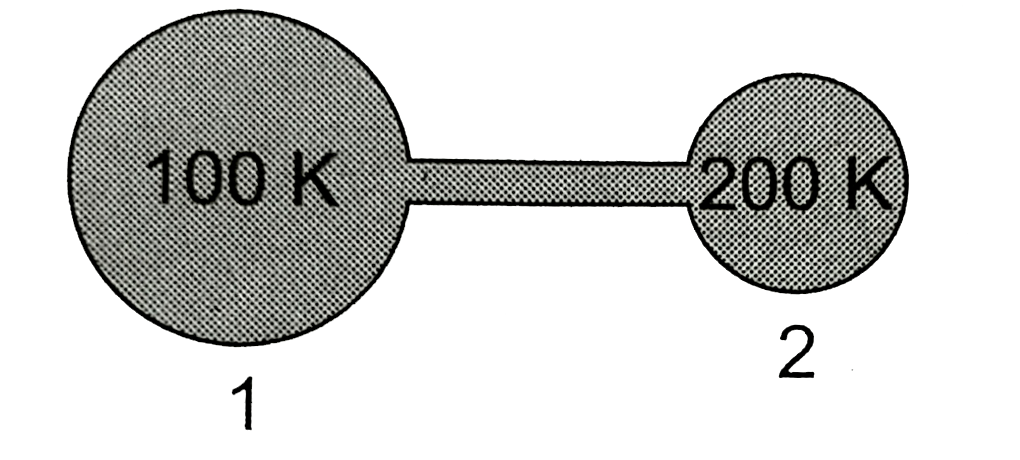Consider Three one -litre flasks labeled A,B and C filled with the gases NO,NO2, and N2O, respectively, each at 1 atm and 273 K. In which flask do the molecules have the highest average kinetic energy?
Flask C
All are the same
Flask A
None
The correct Answer is:b
To solve the problem of determining which flask has the highest average kinetic energy of the gas molecules, we can follow these steps:
1. Understand the Relationship Between Kinetic Energy and Temperature:
The average kinetic energy (KE) of gas molecules is given by the formula:
KEaverage=32RT
where R is the universal gas constant and T is the absolute temperature in Kelvin.
2. Identify the Conditions for Each Flask:
According to the problem, all three flasks (A, B, and C) contain gases (NO, NO₂, and N₂O, respectively) at the same conditions:
- Volume: 1 liter
- Pressure: 1 atm
- Temperature: 273 K
3. Evaluate the Temperature:
Since the temperature T is the same for all three flasks (273 K), we can conclude that the average kinetic energy of the gas molecules in each flask will be the same.
4. Conclusion:
Since the average kinetic energy depends solely on temperature and all three flasks have the same temperature, the average kinetic energy of the molecules in flasks A, B, and C will be identical. Therefore, there is no flask with a higher average kinetic energy; they are all equal.
Final Answer:
The average kinetic energy of the molecules is the same in all three flasks (A, B, and C) because they are at the same temperature of 273 K.
---
The average kinetic energy (KE) of gas molecules is given by the formula:
KEaverage=32RT
where R is the universal gas constant and T is the absolute temperature in Kelvin.
According to the problem, all three flasks (A, B, and C) contain gases (NO, NO₂, and N₂O, respectively) at the same conditions:
- Volume: 1 liter
- Pressure: 1 atm
- Temperature: 273 K
Since the temperature T is the same for all three flasks (273 K), we can conclude that the average kinetic energy of the gas molecules in each flask will be the same.
Since the average kinetic energy depends solely on temperature and all three flasks have the same temperature, the average kinetic energy of the molecules in flasks A, B, and C will be identical. Therefore, there is no flask with a higher average kinetic energy; they are all equal.
The average kinetic energy of the molecules is the same in all three flasks (A, B, and C) because they are at the same temperature of 273 K.
Topper's Solved these Questions
- GASEOUS STATEBOOK - NARENDRA AWASTHI ENGLISHCHAPTER - GASEOUS STATEEXERCISE - Level 2
30 Videos
- GASEOUS STATEBOOK - NARENDRA AWASTHI ENGLISHCHAPTER - GASEOUS STATEEXERCISE - Level 3 Passage 1
4 Videos
- ELECTROCHEMISTRYBOOK - NARENDRA AWASTHI ENGLISHCHAPTER - ELECTROCHEMISTRYEXERCISE - Subjective problems
14 Videos
- IONIC EEQUILIBRIUMBOOK - NARENDRA AWASTHI ENGLISHCHAPTER - IONIC EEQUILIBRIUMEXERCISE - Subjective problems
1 Videos
Similar Questions
Four one litre flasks are separately filled with the gases, O2,F2,CH4 and CO2 under the same conditions. The ratio of number of molecules its these gases:
View SolutionFour one litre flaske are separately filled with the gases H2,He,O2andO3 at the same temperature and pressure. The ratio of total number of atoms of these gases present in different flask would be:
View SolutionTwo flasks A and B of equal volume containing equal masses of H2 & CH4 gases are at 100K and 200K temperature, respectively. Which of the following is true about the total KE (Kinetic energy)?
View SolutionTwo flasks A and B of equal volume are at temperature 100K and 200K containing H2 and CH4, respectively. Which of the following is true about KE per mole (KE= Kinetic energy).
View SolutionTwo flasks A and B of 500 mL each are respectivelly filled with O2 and SO2 at 300 K and 1 atm. Pressure . The flasks will contain:
View SolutionThere are 6.02×1022 molecules each of N2,O2 and H2 which are mixed together at 760mm and 273K. The mass of the mixture in grams is :
View SolutionFigure shows two flasks connected to each other. The volume of the flask 1 is twice that of flask 2. The system is filled with an ideal gas at temperature 100K and 200K respectively. If the mass of the gas in 1 be m then what is the mass of the gas in flask 2

View SolutionA tank used for filling helium balloons has a volume of 0.3m3 and contains (2.0) mol of helium gas at 20.0∘C. Assuming that the helium behaves like an ideal gas.
(a) What is the total translational kinetic energy of the molecules of the gas ?
(b) What is the average kinetic energy per molecule ?
View SolutionTwo flask of equal volumes contains N2 and O2 gases at the same temperature and pressure. Which will have greater number of molecules?
View SolutionTwo flasks A and B have equal volumes. Flask A containing H2 gas is maintained at 27∘C while B containing an equal mass of C2H6 gas is maintained at 627∘C. In which flask and by how many times are molecules moving faster, assuming ideal behaviour for both the gases?
View Solution
